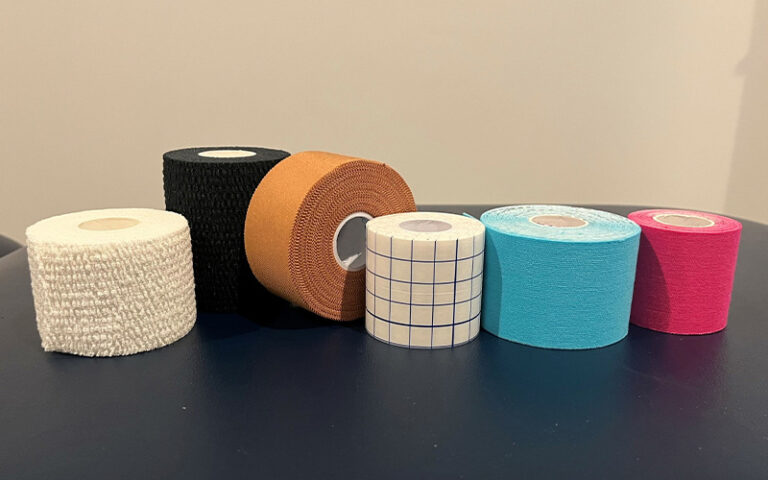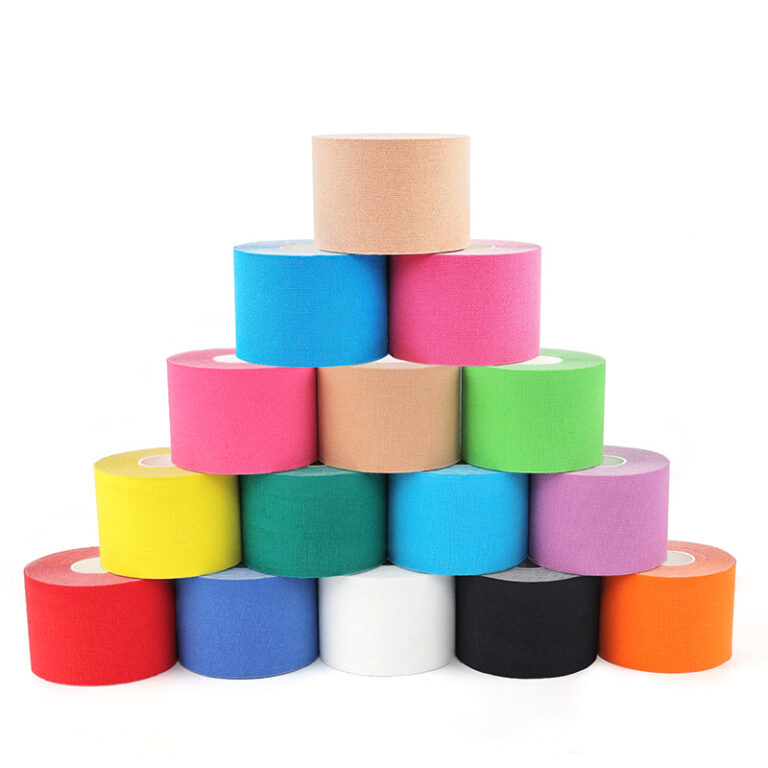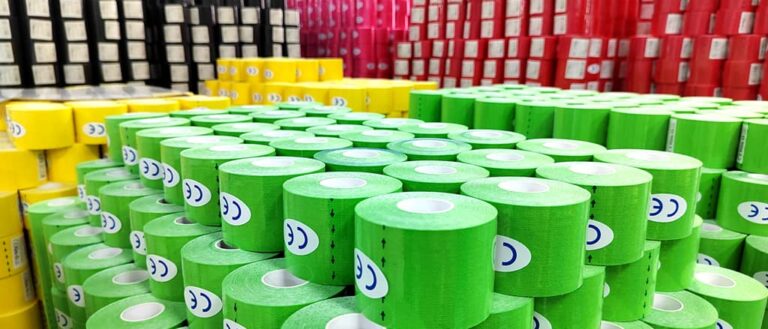Suppose you’ve ever watched the Olympics or any other sporting event. In that case, you may have noticed that athletes on the court, in the fields, and even in the swimming pool have various colored tapes on their legs, usually in long strips, that cover their muscles.
Of course, this is not a decoration but a kinesiology tape for running. As a special elastic physical therapy tape, runners often use it to treat muscle and joint pain. For details, please continue reading this article to learn more.
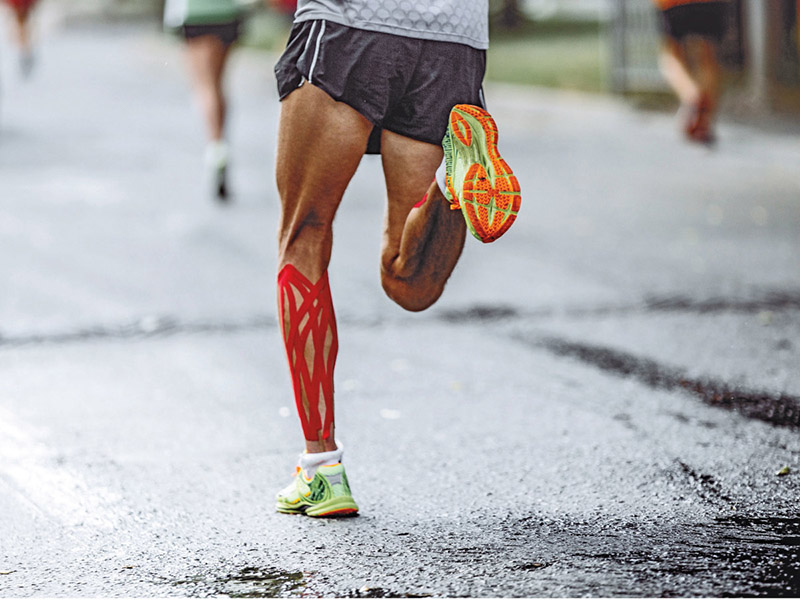
Can I use runner’s tape for running?
We can use runner’s tape when running. Compared to traditional thick, inelastic tapes used to immobilize joints, such as wrist or ankle athletic tape, kinesiology tape for running is thinner, more breathable, and more comfortable against the skin; because runner’s tape doesn’t restrict movement, athletes wear it during training and competition.
Seeing this, you must have many questions about kinesiology tape for running, why it works, and why most sports enthusiasts use it, so let’s look at the role of runner’s tape.
What does runner’s tape do?
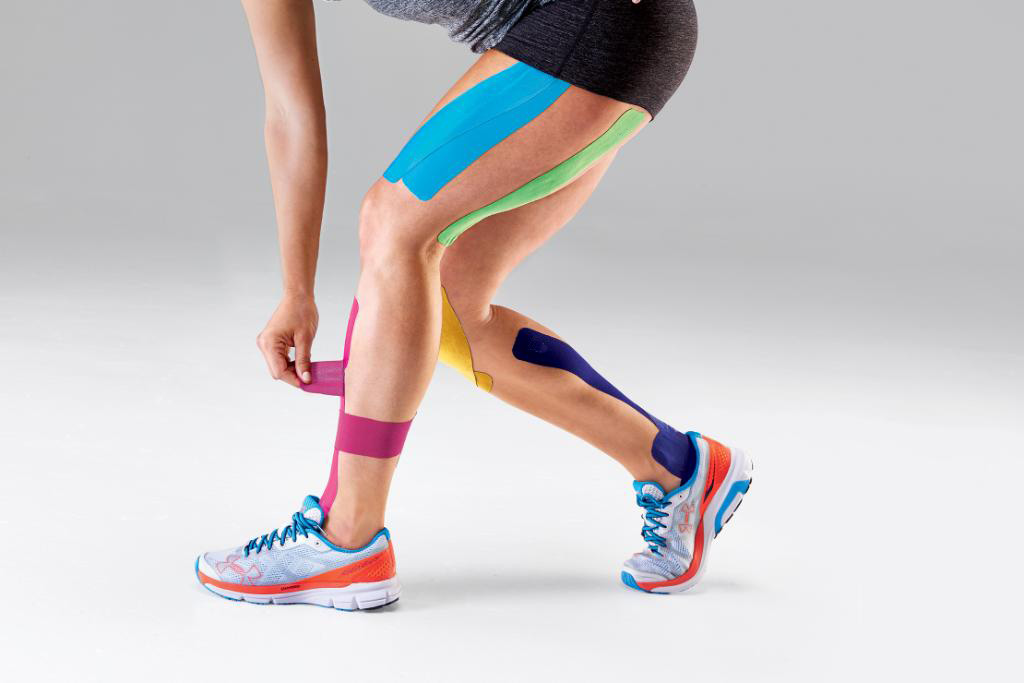
Lift skin and reduce inflammation
This skin lift creates folds or wrinkles in the runner’s tape and skin. The folds of the runner’s tape increase the gap (the space between the skin and underlying muscle) and create a “lifting effect.” This lift reduces inflammation and lowers pressure in the target area while increasing the flow of lymph fluid from the target area and relieving considerable, painful bruising.
Sensory stimulation
Kinesiology tape for running reduces pain by stimulating pressure receptors in the skin. Placing the kinesiology tape for running on the skin reinforces feedback to the brain and somatosensory systems. Because the runner’s tape material is Thin, light, and close to the skin, it allows our brains to shut down irrelevant information。 It inadvertently has an excellent therapeutic and relief effect.
Relief the pain
Runners sometimes run through pain because the exact mechanism exists in the brain. When you flex a joint, your brain gets feedback from the muscles, ligaments, and skin. Applying kinesiology tape for running to the skin can enhance sensation, improve the brain’s ability to process pain, and turn off constant reminders of pain, reducing pain.
Diversified functions
Different methods of applying physical therapy tape can improve blood circulation, lymph circulation, muscle function, joint balance, fascial tissue function, etc. Physical therapy tape can be used on skin joints in hundreds of ways to achieve the desired effect. You can also look at kinesiology tape strips to learn more about their appearance and types.
Can you run a marathon with runner’s tape?
We recommend using runner’s tape on specific areas when running a marathon. Marathon is a relatively popular long-distance running sport in the world. The total length of the race is 42.195 kilometers. It is held in many cities every year. This sport is popular because if you feel that your physical fitness is excellent and have passed the pre-race test, you can sign up to participate after a physical examination. No excessive technical requirements exist, and you can compete with professional athletes. However, other competitions do not have such opportunities at all, so sports enthusiasts widely seek after them.
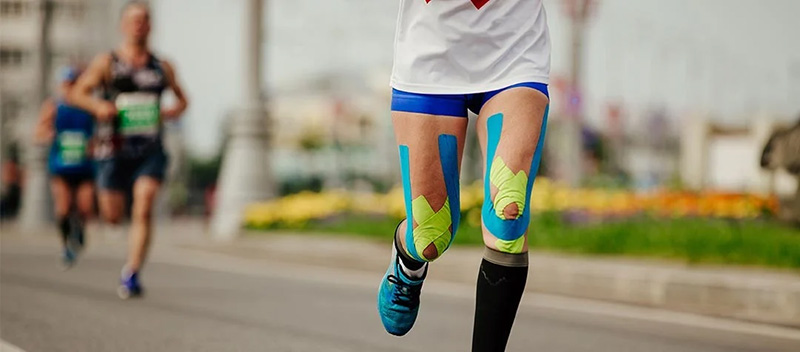
Why do you need to use runner’s tape when running a marathon?
Marathon is straightforward, but it is a little different from ordinary running. At least those who have never participated beforehand or haven’t done enough homework will make some simple or potentially severe mistakes. For example, some people prepare new running shoes and choose loose-fitting clothing before a race.
When it comes to the choice of clothes, we usually like to wear looser clothes that feel breathable, light and comfortable. We never imagined what harm clothes would do to our bodies, but it would take an average person at least 3 to 4 hours to finish the entire race. Moreover, the legs and arms will swing back and forth during running, and the body will rise and fall. If the clothes are too loose, they constantly rub against the skin.
A short friction period is nothing, but a few hours without interruption can have dire consequences. Especially the more prominent points on the body, if not protected with runner’s tape, may cause serious consequences.
Nipple
The two points on the chest are the most critical, and the skin is relatively delicate. Constant friction will cause redness, swelling, and even scratches and bleeding. The pain is indescribable. And it will leave two red marks on the clothes, which is quite embarrassing. If this happens, most people cannot finish the Marathon.
Prevention: Protect the nipple area with our nipple patches. A nipple patch is another form of tape. Unlike regular tape, it has a sheet-like design, just like flower petals. The adhesive-free fabric design in the center area means your nipples won’t feel sore when you remove the nipple patch. The edges are as sticky as runner’s tape, ensuring they won’t burden the skin and won’t fall off during long-term exercise and sweating. Prevent injuries from excessive friction with clothing. This is a simple yet effective protective measure.
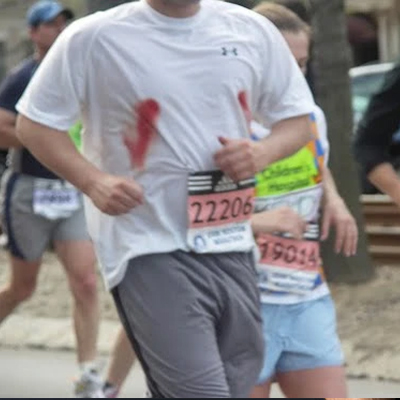
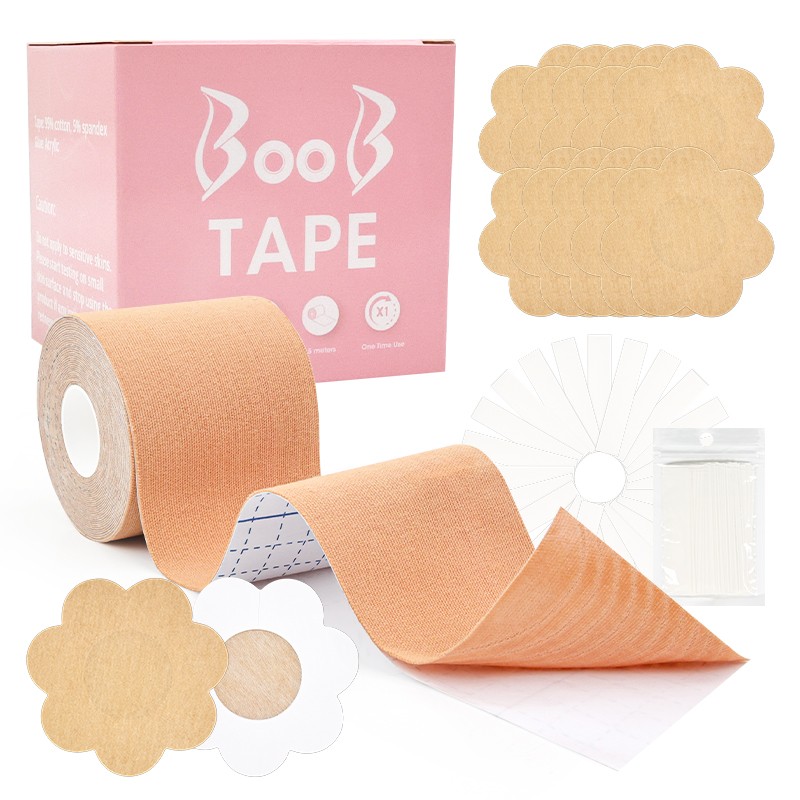
Inner thigh
The same principle applies to the inner thigh; long-term friction of the pants will lead to skin breakage and abrasions, especially during games that last 2 to 3 hours, and you need to protect them.
How to prevent it: Put a piece of runner’s tape on the inner thigh to avoid excessive friction that may cause abrasion pain.
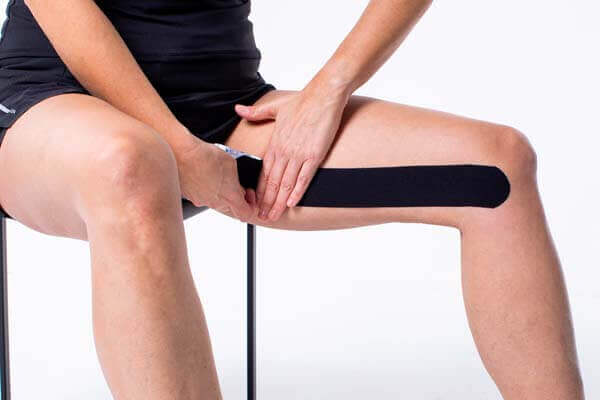
Armpit
There are two types of armpit abrasions: One possibility is that short-sleeved clothes fit the arms too closely, such as some tights, which can cause abrasions during long-distance training or marathon running.
Another possibility is a posture problem. The arm swing is too close to the body, which will cause discomfort to the arm skin over time.
Prevention methods: Pay attention to movements and postures when running. Don’t clamp your hands too tightly when swinging. Spread your hands slightly outward and relax to avoid injuries. Another method is to use runner’s tape on the armpits, where wear is more likely to occur.
Blisters on the soles of feet
Usually happens during long training sessions or running in the rain. Long-term friction between socks and the soles of the feet, shoes that do not fit well with the feet (too big or too small), and stitching of socks are all causes of blisters. In addition, nails that are too long can also cause blisters.
Prevention methods: The shoes must fit well (squeeze your toes forward, leaving a finger thickness between the heel and the end of the shoe). You can stick our beach foot pad on the soles of your feet – The beach foot pad is light, breathable, wear-resistant, and heat-insulating, which acts as a barrier for the sole and protects the foot as much as possible from blisters during Marathon.
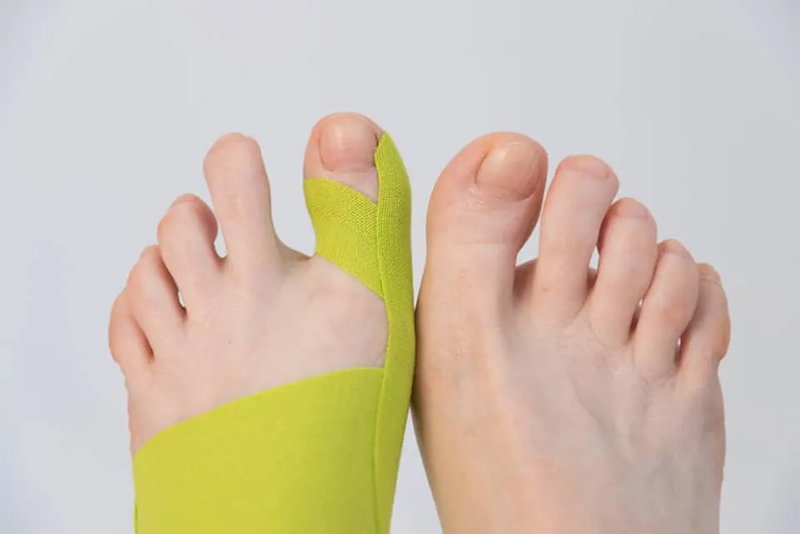
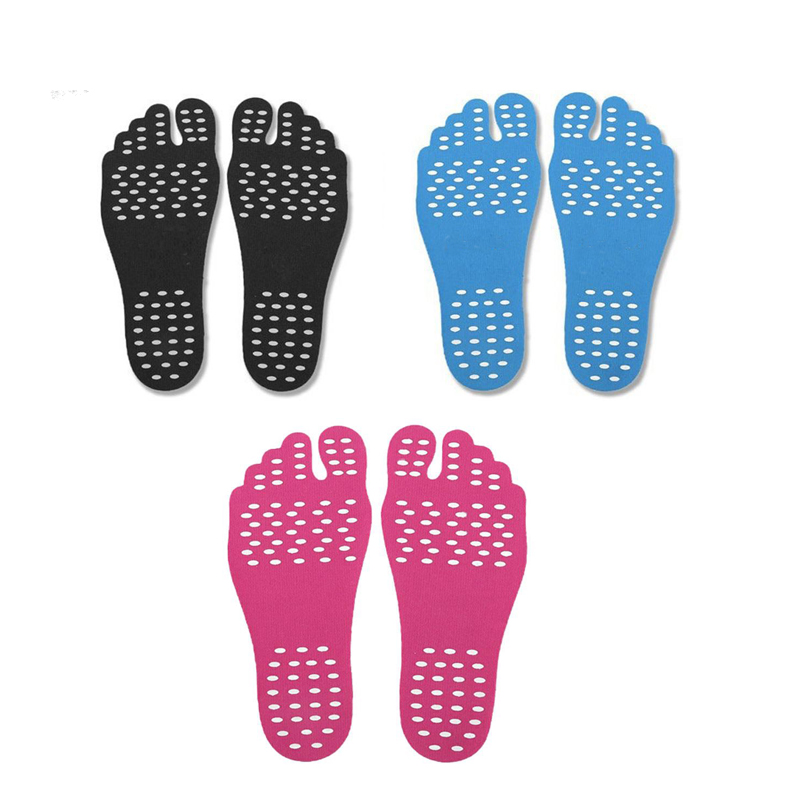
Shoulder and neck
Generally, soreness may occur after 1 to 2 hours of running. This phenomenon is mainly caused by incorrect running posture or the upper body being too stiff or relaxed.
Prevention method: You must warm up before running and strengthen the stretching exercises of the upper body; using runner’s tape to fit the neck before running can help adjust the correct position, making running more accessible and less burdensome. Kinesiology tape for running can also help when the process is halfway through. Relieve fatigue and pain caused by the neck.
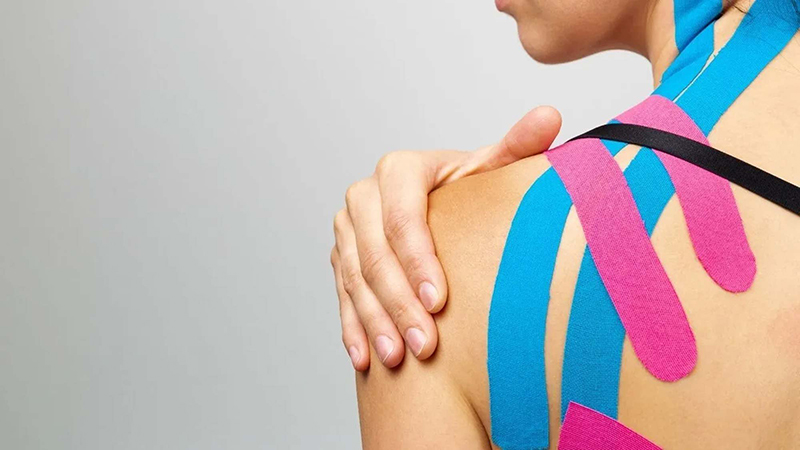
All of the above problems may arise during a marathon. The specific situation depends on the individual. Of course, the kinesiology tape for running can also be used on other body parts. Correct usage can effectively prevent or relieve pain during exercise. If you want to know more, you can continue to follow our website or go to the blog page to find copywriting and methods that may be helpful to you.
Does Kinesiology tape for running help runners’ knees?
Of course, runner’s knee annoys athletes, can hinder training, and even prevent you from competing. Many people may experience knee pain after excessive exercise; eventually, most runners will suffer from the runner’s knee. Runner’s tape is an excellent option for this situation.
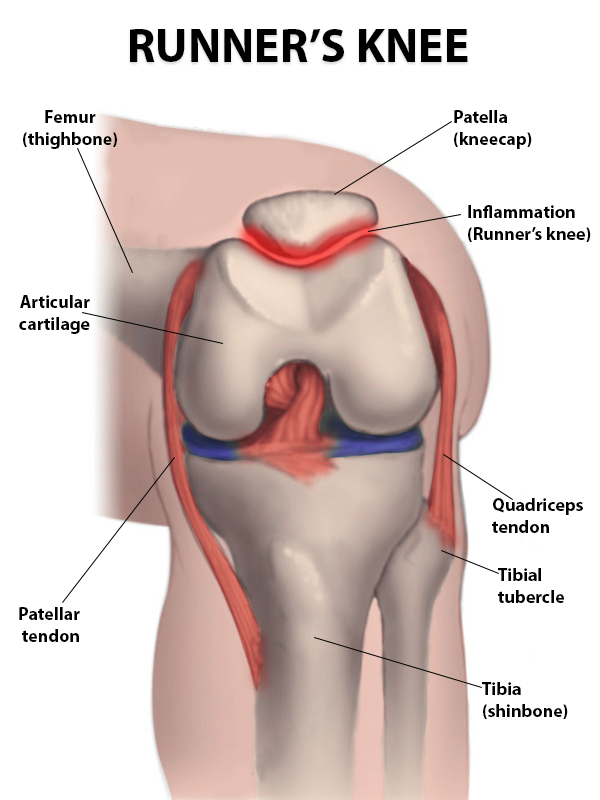
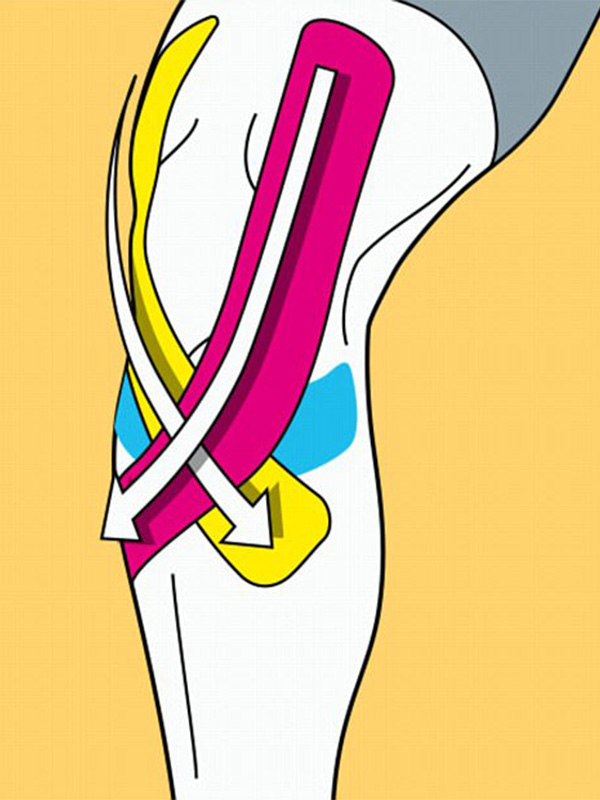
What does runner’s knee look like, and how does it happen?
Patellofemoral pain syndrome (PFPS), or runner’s knee, involves pain ranging from mild discomfort to chronic pain around the knee or at the back of the knee into the thigh bone. The pain may be accompanied by a clicking sound when you bend or extend your knee. The pain worsens when walking downstairs or running downhill. You may also hear a popping sound or feel pain when you squat, kneel, or stand up from a chair.
To test the runner’s knee, sit down and straighten the affected leg in a chair. Have someone squeeze the top of your knee while gently pressing on your kneecap. As you tighten your thigh muscles, push from the outside of your leg toward the middle. If it hurts, you have a runner’s knee.
Because the thigh muscles stabilize the knees, the feet maintain stability during activities such as running. Weak thigh muscles and a lack of proper foot support can weaken the muscles. You will likely develop a runner’s knee if you suddenly increase your running mileage or perform extreme running training after sitting for long periods.
Using runner’s tape can help treat and prevent a runner’s knee
Runner’s tape can help relieve knee pain in runners by aligning the kneecap and supporting the patellar tendon. The physical therapy tape is comfortable and securely attached even after showering or sweating. It’s also very close to the skin, so when you put it on, it feels like you’re not wearing anything. It’s comfortable and very effective. Please refer to the video below or search for WEMADE in TK software for specific usage methods. We will also update new application tutorials frequently to help you solve the problem.
The above explanation shows that runner’s tape can be used when running to prevent pain and injury. This is why more athletes are using runner’s tape when working out or competing. I hope the explanation in this article can give you a new understanding of running prevention. I also hope that people who like running will join the ranks of using runner’s tape to protect the body from injuries during exercise.

